#import betel nuts
Explore tagged Tumblr posts
Text
The Secret to Importing High-Quality Betel Nuts for Cheap: A Directory of the Top Exporters
Betel nuts are a popular chewable stimulant in many parts of Asia. They are typically wrapped in a betel leaf with lime paste and other ingredients, and chewed for their stimulating and euphoric effects. Betel nuts are also used in some traditional medicines and religious ceremonies.
Indonesia is the world's largest producer and exporter of betel nuts. Other major betel nut exporting countries include India, Sri Lanka, Thailand, China, Vietnam, and the Philippines.
If you are looking for a reliable betel nut exporter, there are a few things to keep in mind:
Quality: Make sure to choose an exporter that sells high-quality betel nuts. Betel nuts can vary in quality depending on the variety, growing conditions, and processing methods.
Price: Betel nut prices can vary depending on the quality of the nuts and the country of origin. It is important to compare prices from different exporters before you buy.
Reliability: Make sure to choose an exporter that is reliable and has a good track record. You can read reviews from other buyers to get an idea of the exporter's reputation.
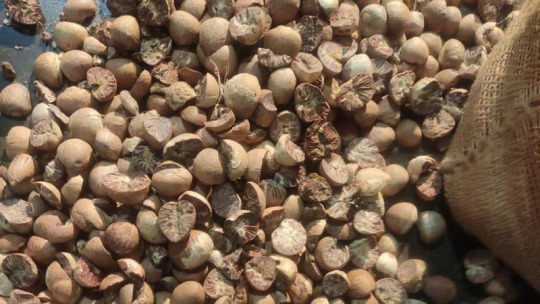
Here is a directory of some of the leading betel nut exporters in the world:
Indonesia:
PT. Rezeki Mandiri Global
PT. Agro Future Indonesia
CV. Rezeki Mandiri
CV.GHI
PT. JKL
India:
M/s. ABCD
M/s. EFGH
M/s. IJKL
M/s. MNOP
M/s. PQRS
Sri Lanka:
AKEN LANKA PVT LTD.
ASHOK LANKA EXPORTS
BALAJI VENTURES LANKA PVT LTD.
BESPICE PVT LTD.
BEST DEAL EXPORTERS PVT LTD.
Thailand:
Thai Betel Nut Exporters Association
Thai Chamber of Commerce
Federation of Thai Industries
Thai Food Processors Association
Thailand Rice Exporters Association
China:
China Chamber of Commerce for Import and Export of Foodstuffs, Native Produce and Animal By-Products (CCCFNA)
China National Association of Grain Trade (CNAIT)
China Association for the Promotion of International Trade (CCPIT)
China Chamber of Commerce of Machinery and Electronics Importers and Exporters (CCCME)
China Food and Beverage Industry Association (CFBIA)
Vietnam:
Vietnam Chamber of Commerce and Industry (VCCI)
Vietnam Food Association (VFA)
Vietnam Association of Seafood Exporters and Producers (VASEP)
Vietnam National Coffee and Cocoa Association (VINACA)
Vietnam Cashew Association (VINACA)
Philippines:
Philippine Coconut Authority (PCA)
Philippine Chamber of Agriculture and Food Inc. (PCAFI)
Philippine Exporters Confederation Inc. (Philexport)
Philippine Chamber of Commerce and Industry (PCCI)
Federation of Philippine Industries (FPI)
Malaysia:
Malaysian Palm Oil Council (MPOC)
Malaysian Rubber Board (MRB)
Malaysian Cocoa Board (MCB)
Malaysian Timber Council (MTC)
Malaysian Pineapple Industry Board (MPIB)
Bangladesh:
Bangladesh Export Promotion Bureau (BEPB)
Federation of Bangladesh Chambers of Commerce and Industry (FBCCI)
Bangladesh Chamber of Industries (BCI)
Bangladesh Garment Manufacturers and Exporters Association (BGMEA)
Bangladesh Knitwear Manufacturers and Exporters Association (BKMEA)
Myanmar:
Myanmar Trade Promotion Organization (MTPO)
Myanmar Chamber of Commerce and Industry (UCCI)
Federation of Myanmar Chambers of Commerce and Industry (FMCCI)
Myanmar Rice Exporters Association (MREA)
Myanmar Timber Merchants Association (MTMA)
Papua New Guinea:
Papua New Guinea Investment Promotion Authority (IPPNG)
Papua New Guinea Chamber of Commerce and Industry (PNGCCI)
Manufacturers Council of PNG (MCPNG)
PNG Business Council (PNGCBC)
PNG Exporters Association (PNGEX)
Taiwan:
Taiwan Bureau of Foreign Trade (BOFT)
Chinese National Association of Industry and Commerce (CNAIC)
Taiwan Confederation of Industries (TCI)
Taiwan Electrical and Electronic Manufacturers Association (TEEMA)
Taiwan Textile Federation (TTF)
Conclusion
This is just a small sample of the many betel nut exporters around the world. When choosing an exporter, it is important to consider the quality of the nuts, the price, and the exporter's reputation. You can also contact the
#betel nut exporters directory#import betel nuts#buy betel nuts in bulk#wholesale betel nuts#betel nut suppliers#betel nut exporters near me#best betel nut exporters#cheap betel nut exporters#organic betel nut exporters#fair trade betel nut exporters#sustainable betel nut exporters
1 note
·
View note
Text

Best Betel Nuts Exporter From India | 100 Quality Products
The journey of betel nuts with Glee Impex is a fascinating process—from sourcing directly from trusted farms to ensuring premium quality at every step. With a focus on sustainable practices and international standards, Glee Impex guarantees that every betel nut reaches customers worldwide fresh and ready for use. The global demand for betel nuts continues to grow due to their cultural significance, nutritional value, and diverse uses. As a leading betel nuts exporter, Glee Impex plays a vital role in meeting this demand while maintaining quality and sustainability.
#Betel Nuts Exporter#Importance of Betel Nuts in Global Markets#Best Betel Nut Supply Chain#high-quality betel nuts#Betel Nut Export
0 notes
Text
Boita Bandana, a cultural tribute to ancient maritime activities

People in Odisha celebrate Boita Bandana, a boat festival marking the region's maritime glory. This annual observance occurs on Kartik Purnima, the full moon day in the holy month of Kartik. Boita Bandana is a cultural tribute to Odisha’s ancient maritime activities and trade relations with Southeast Asian countries.
Symbolic Act of Floating Boats:

The most important ritual of Boita Bandana is floating little hand-made boats. They are usually made of plantain or banana stems and other similar natural and traditional materials. Boats are laden with various offerings such as flowers, coins, ‘Kaudis’ or cowries, ‘Pana’ or betel leaves, ‘Guā’ or betel nuts, and a lighted lamp. This symbolic act pays homage to Odisha’s rich maritime history and the courageous sailors who engaged in trade with Southeast Asian nations. The festival serves as a cultural bridge connecting the present generation with the seafaring legacy of their ancestors.
Remembering the Sadhabas:
Boita Bandana echoes the collective consciousness & memories of the past. It commemorates the legacies of the Kalinga Sadhabas – the maritime merchants & seafarers. The origins of this festival descend from an ancient maritime tradition of merchant trade and voyages across the ocean to different regions of Asia, which was well developed in this region known in ancient times as Kalinga. This ancient maritime tradition is preserved through this festival which celebrates the voyages of their ancestors, to Southeast Asian countries, which include mainly present-day Bali, Java, Sumatra, and Borneo in Indonesia, Malaysia, Sri Lanka, Thailand, Cambodia, and all the way to Champa region in Vietnam. Local traditions ascribe the origins of the ritual tradition to around the 3rd century BC as Kalinga was a well-known powerful maritime power with strong trading links across the oceans, especially during the reign of the Maurya empire whose rulers coveted the region for its influence.
Kartika Purnima was considered auspicious for them to begin their voyage. It was during this time of the month as well when the Northeast monsoon winds started blowing from November, which was favorable for the merchant mariners as the winds would guide the sails of their boats across the ocean leading them southwards towards Sri Lanka. Thereafter using the ocean currents to cross the Indian Ocean to reach Southeast Asia where they would carry on sailing across different regions for trade. After trading the ships would take the ocean countercurrent to get back to Sri Lanka in time to take advantage of the Southwest monsoon around May and return home. Hence the families of the traveling sailors used to perform rituals on the day of Kartik Purnima for their safe journey and return, which henceforth became the tradition of Boita Bandana (Worship of the Boats).
Boita Bandana and Jagannath Culture:
At Sri Mandira (Jagannath Puri), the deities wear a variety of attires, or ‘besa’, throughout the year. During the holy month of Kartika, they receive special ‘besa’ outfits. In years when the Kartika month includes six days of ‘Panchaka’ instead of the usual five, the deities wear the rare and unique ‘Nagarjuna Besa’. In this special attire, the deities are dressed like ‘Nagarjuna’, a revered figure. This unique ‘besa’ is a significant part of the Kartika Purnima celebrations in Puri. And, Boita Bandana is every year meant to be celebrated in the early morning of Kartik Purnima.
Boita Bandana serves as a vibrant reminder of Odisha’s historical ties with other maritime civilizations and instills a sense of cultural pride among the people.
Information from different sources.
38 notes
·
View notes
Text
‧。⋆ Dangerous Herbs to Watch Out For ⋆。‧
As part of my journey into my craft, I’ve spent a lot of time diving into herbalism. When I started creating content, I knew this was a topic I wanted to explore deeply. And what better way to begin than by talking about some herbs we should steer clear of?
Herbalism can be a beautiful and powerful part of spiritual practice, but it’s important to remember that not all plants are safe to use. To help you navigate this, here’s a list of some dangerous herbs, along with their common names, scientific names, and potential adverse effects. Some of these herbs can be dangerous not only when ingested but also through skin contact or inhalation, so always prioritize safety and respect when working! 🌿
❀ Aconite
Other Common Names: Monkshood, Wolfsbane, Aconitum
Scientific Name: Aconitum spp.
Adverse Effects: Heart palpitations and arrhythmias, hypotension, nausea, vomiting, abdominal pain, respiratory system paralysis, and death.
[Notes]
Toxic even if absorbed through the skin. Always use gloves when handling, and never ingest.
❀ Areca Nut
Other Common Names: Betel Nut
Scientific Name: Areca catechu
Adverse Effects: Worsening of mental health issues in people with existing psychiatric conditions. Can cause cancer in the mouth, throat, esophagus, and stomach when chewed.
[Notes]
Primarily dangerous when chewed or ingested. Avoid all oral use.
❀ Lobelia
Other Common Names: Asthma Weed, Pukeweed, Vomit Wort
Scientific Name: Lobelia inflata
Adverse Effects: Toxicity, rapid heartbeat, hypotension, coma, death.
[Notes]
Toxic if ingested, handling large amounts or inhaling powdered forms can also be harmful.
❀ Atractylate
Scientific Name: Atractylis gummifera
Adverse Effects: Liver damage, nausea, vomiting, epigastric and abdominal pain, diarrhea, anxiety, headache, convulsions, often followed by coma.
[Notes]
Most risks come from ingestion. Avoid using this plant in any form.
❀ Country Mallow
Other Common Names: Heartleaf, Silky White Mallow
Scientific Name: Sida cordifolia
Adverse Effects: Heart attack, heart arrhythmia, stroke, death.
[ Notes ]
The stimulant properties can cause severe health issues if ingested or used in medicinal preparations.
❀ Dan Shen
Other Common Names: Red Sage, Chinese Sage, Tan Shen
Scientific Name: Salvia miltiorrhiza
Adverse Effects: Potentiates warfarin activity, leading to excessive anticoagulation and bleeding.
[Notes]
Hazardous when ingested, especially for those on blood-thinning medications.
Thank you so much for taking the time to read this! 🌟 I hope this list helps you stay safe as you explore the world of herbalism and incorporate it into your craft. Remember, knowledge is power, and approaching plants with respect and caution is key to unlocking their full potential.
You can find more posts like this on my patreon!
https://www.patreon.com/posts/dangerous-herbs-116405313?utm_medium=clipboard_copy&utm_source=copyLink&utm_campaign=postshare_creator&utm_content=join_link
If you have any questions or thoughts, feel free to share them—I’d love to hear from you! Let’s keep learning and growing together. 🌿✨
17 notes
·
View notes
Text
Just What Was Wan Smoking?

I suspect, for the most part, Wan was smoking cheroots.
Cheroots are filterless cylindrical cigars, easy to hand roll and clipped at both ends.
In Thailand, they were traditionally rolled in banana leaves and as well as tobacco, the leaves of the Indian cork tree were often added, along with the flowers sometimes for fragrance.
Things like molasses, honey, rice wine, pineapple and banana were often used to sweeten the mixture.

Sometimes cannabis could be added, which was historically used for pain relief in Thailand.

It seems like Wan relies on smoking these as a way to manage his mental health issues, like many smokers, who reach for a cigarette when they are stressed, we often see him smoking when he is feeling disturbed.
We can see from the film that Khem seems very comfortable with the act of stealing but we only ever see him steal or think about stealing, cheroots on Wan's behalf.
He even splashes out on expensive imported "cigarettes," as a gift for Wan which his friend is clearly touched by. That recognition from Khem, that these are important for Wan.
It's as if he recognises that they are something Wan needs, we never see Khem smoke himself although they were both clearly fans of betel chewing before they were forbidden to do so in ManSuang.
Hence their black teeth.

Betel nut is a stimulant and many people describe the act of chewing betel as giving them a bit of a high. It is certainly addictive but was also a standard part of socialising for a very long time in several parts of Southeast Asia and India.
As Khem and Wan are forbidden from chewing betel while they stay at ManSuang, it is likely that they both would have experienced some withdrawal symptoms and this probably made Wan rely on the cheroots even more.
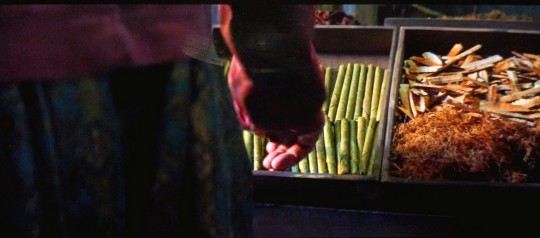
Cheroots originated in India along with beedies which historically were made from leftover scraps of tobacco and rolled into leaves.

Cheroot smoking was very traditional both in India and Myanmar.
44 notes
·
View notes
Text
January 12, 2024!
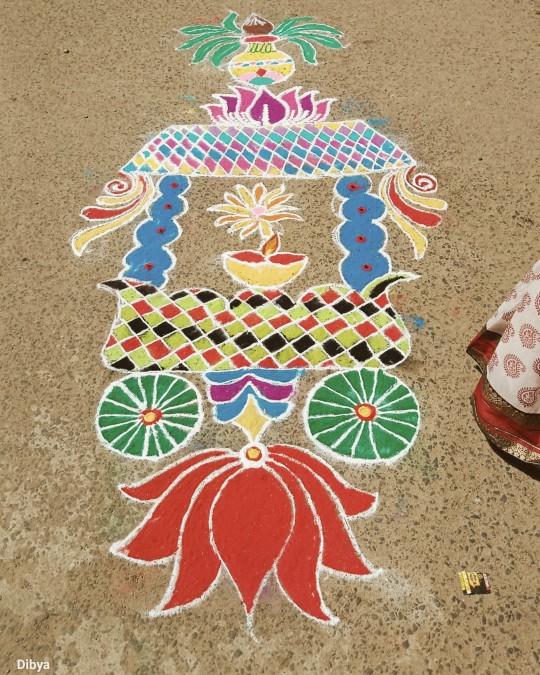
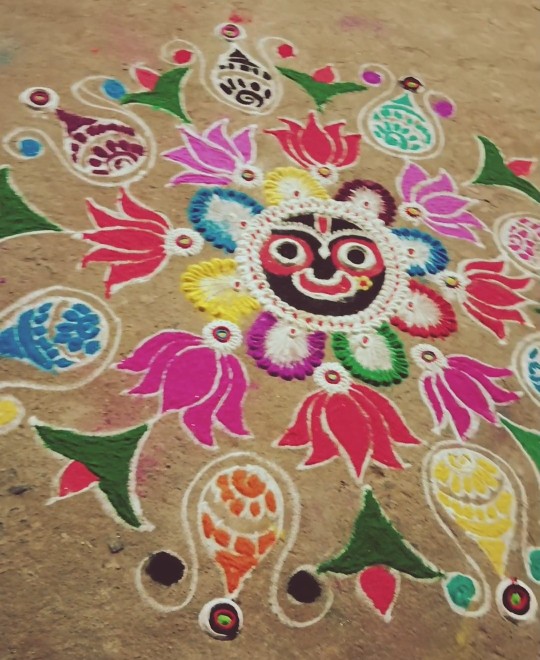
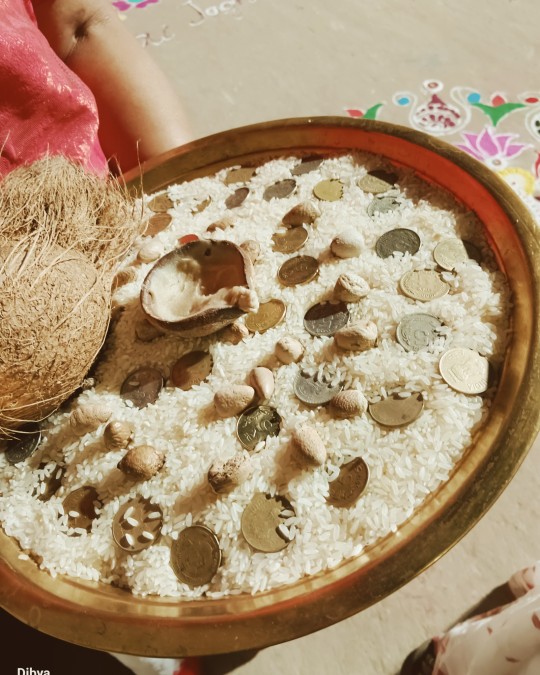
For people of Odisha, nothing is more important than Lord Jagannath. And this could be seen in my neighborhood when all the residents gathered for welcoming the Srimandira Parikrama Arpana Ratha. We drew rangoli, and prepared offerings of arua chaula (white rice) and gua (betel nut). We had to wait for hours before the chariot could reach us, but it didn't dampen our excitement. Isn't that the whole purpose of special occasions, festivals and rituals? To bring people together, strengthen the community ties and celebrate the life!
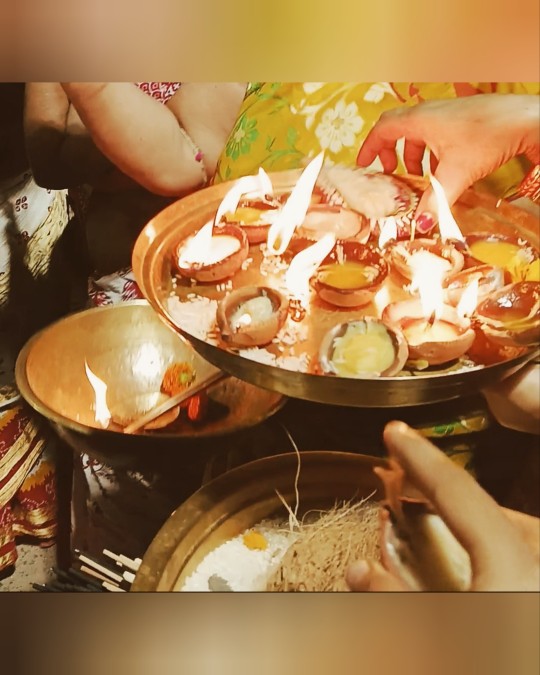

Shreemandira Parikrama or Heritage Corridor will be 75 m corridor around the Meghanada Pacheri of Jagannath Temple, Puri. Yajna, anukra ropana and formal inauguration ceremony of the project would be held on 17th January, 2024. Arpana Raths are visiting door to door and collecting donations of Akshat (rice) and betel nuts from the people, which will be sent to Puri for the yajna and rituals.
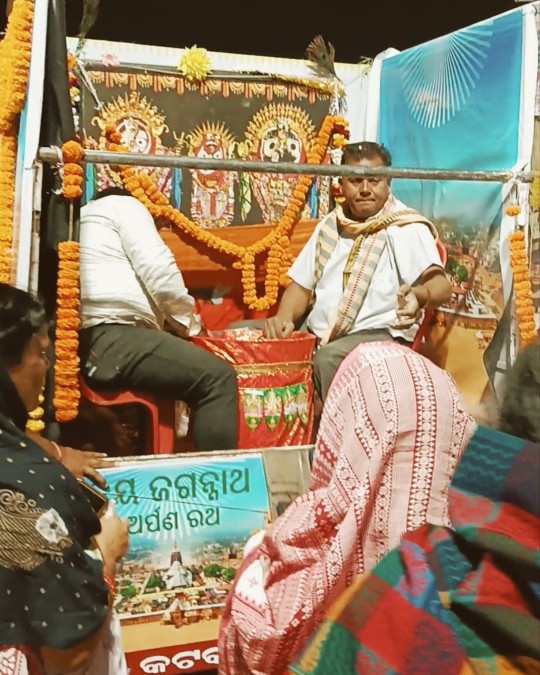

#diary post#odiablr#desiblr#desi tumblr#jagannath temple heritage corridor project#srimandira parikrama arpana rath#lord jagannath#jagannath temple puri#puri#odisha
10 notes
·
View notes
Text
fire burn, & cauldron bubble.
Bottles clinked from behind the slightly-ajar door of Moonspell Apothecary's basement. A fire burned merrily in the clay cookstove, illuminating the room in its flickering orange light. The room was lined with shelves and worktables, filled with various large jars of bizarre contents. Some were easily identifiable herbs, others... not so much. Gnarled roots here, amanita caps there.
At the alchemy table, a slender woman worked in an apron and well-worn house shoes. Her hair was pulled back into a bun, and several of her trusty sun-charged stones were laid out on the table before her. She looked briefly to the small cauldron and watched the steam rise, listening for a moment to hear if it had begun to bubble.
Not yet... but soon. She had to hurry.
She turned back to her work, her hands reaching for the centrepiece stone. It was a beautiful fire opal. Each facet beneath the polished, smooth surface glimmered brightly, as if they were dancing flames. Her fingers closed around it for a moment, feeling its warmth and weight in her palm. The stone was smaller than most of its kind, almost swallowed entirely within her hand.
Elsinore closed her eyes, exhaling softly as she stood before the table, focusing. She'd gotten good at this part, feeling the stone's heat pass through her hand, and her magic reaching back out to meet it. She felt them unify, a surge jolting through her body, and began to speak under her breath. The spell was ancient as time, but the words still held their power.
"Ignitum lapidem, redde draconi vitale suum."
It began to glow, light bursting forth to cast the room in its brilliant rays, and the vampire smiled triumphantly, opening her eyes. She kept them squinted against the brightness, moving to drop the stone into the cauldron; the water had begun to boil. Once it lay beneath the surface of the water, she opened her eyes fully and ran for her ingredients.
She returned once she had them, muttering under her breath.
"Acorn," in it dropped, once she'd ground it into a fine powder.
"Adderstongue., and alkanet." She'd used these whole, but dried; both the stems and pretty flowers.
She stopped to stir it with a small wooden paddle, watching as the water begun to darken, and the rays of the stone became murky. No dimmer, but obscured as the herbs boiled. After a moment she added dried, crushed apple, watching the powder dissipate into the mixture.
After thirty minutes, it was time to add balsam fir, three clusters of the spiky, densely packed needles. A sprig of basil, an ear of barley. A bay leaf, unicorn's blood, betel nut powder, and finally four dried dandelion flowers. She stirred again, beginning a second incantation.
"Sana spiritum, seda animam. Depelle aegram, antiquam renova."
Her brow creased, hands splayed over the brew as she moved them to and fro, sparks shooting from her palms and hissing as they passed through the surface of the potion. The glowed beneath the liquid and then died.
She had one last step, before it was complete. It was the most important part. She thought for a moment, before choosing how it should taste.
"Turn this dark potion fine; like the darkest, decadent red wine." Red it turned, darkening until the opal's light slipped from the stone and into the potion, making it glow. Removing the cauldron from the heat, she waited a moment before straining and transferring it by funnel into a tall, slender glass bottle. The red depths shimmered like velvet, even in the darkness of the lab. Elsinore smiled wickedly, clasping the warm bottle in her hands.
She must deliver it tonight. It was at its most potent once it had fully cooled.
2 notes
·
View notes
Text
Paan Franchise Opportunities: Is it the Right Business for You?
Because of the increasing novelty and allure of the Indian culinary scene, the paan industry has emerged as a desirable option for prospective business owners. From traditional paan kiosks to modern paan cafés, the market offers a variety of franchise opportunities for those looking to capitalize on this popular Indian treat. Before investing, it’s important to figure out whether a Banarasi Paan franchise is the best business option for you.
The Appeal of Paan Franchises
In Indian culture, paan, a traditional treat made from areca nuts, betel leaves, and other flavorings, is revered. It’s an experience of a surge of flavors and smells that pleasure the senses, not merely a palette cleanser. With its extensive appeal and rich history, paan has moved past its traditional origins to become a cutting-edge gastronomic delight.
#India's best Paan franchise in india#Banarasi paan cafe franchise model#Flavored paan franchice in India#banarasi paan franchise shop#Banarasi paan in india
0 notes
Text
Vasant Panchami 2025: Saraswati Puja Date, Auspicious Muhurat, and Ritual Significance

Vasant Panchami, also known as Saraswati Puja, is a vibrant Hindu festival that marks the arrival of spring and is dedicated to Goddess Saraswati, the deity of wisdom, learning, and arts. Celebrated with great enthusiasm, this day holds immense significance for students, scholars, and artists who seek blessings from the goddess for knowledge and creativity.
Vasant Panchami 2025: Date and Muhurat
In 2025, Vasant Panchami falls on Sunday, February 2nd. The auspicious muhurat for Saraswati Puja is observed during the Purvahna Kala, the time between sunrise and midday, which is considered ideal for performing rituals and prayers. According to the Hindu Panchang, the timing for Saraswati Puja muhurat on this day is as follows:
Saraswati Puja Muhurat: 09:14 AM to 12:19 PM
Panchami Tithi Begins: 09:14 AM on February 2, 2025
Panchami Tithi Ends: 06:52 AM on February 3, 2025
It is advisable to consult a Hindu Panchang or an astrologer for precise timings tailored to your location.
Significance of Vasant Panchami
Vasant Panchami is celebrated to honor Goddess Saraswati, who symbolizes knowledge, wisdom, and creativity. The festival is particularly important for students and artists. The color yellow is associated with this festival, representing energy, enlightenment, and prosperity. Devotees wear yellow clothes, prepare yellow-colored sweets, and decorate their homes with marigold flowers to signify the vibrant spirit of the day.
The festival also marks the onset of the spring season in India, bringing freshness, greenery, and blooming flowers. It is considered an auspicious day for starting new ventures, educational pursuits, and artistic endeavors.
Saraswati Puja Procedure
Performing Saraswati Puja at home or in educational institutions is a simple yet meaningful process. Here’s a step-by-step guide:
Prepare the Puja Area:
Clean the area where the puja will be performed.
Place an idol or picture of Goddess Saraswati on a clean platform, adorned with yellow flowers.
Decorate the Puja Space:
Use yellow and white flowers for decoration.
Arrange offerings such as fruits, sweets, and yellow-colored food items.
Gather Puja Items:
Items include kumkum, turmeric, incense sticks, diya (lamp), betel leaves, and betel nuts.
Keep books, musical instruments, or any learning tools near the idol as a symbolic offering.
Perform the Puja:
Light a diya and incense sticks.
Offer flowers, fruits, and sweets to the deity.
Chant Saraswati Vandana or mantras such as “Om Aim Saraswatyai Namah” to invoke the blessings of the goddess.
Seek Blessings:
Touch the feet of elders and seek their blessings.
Offer food to Brahmins or the needy as part of the tradition.
Conclude with Prasad:
Distribute the prasad among family members and participants after the puja.
Observances Across India
Vasant Panchami is celebrated differently in various parts of India:
In Bengal, it is a grand occasion for students and educational institutions, with elaborate rituals dedicated to Saraswati.
In North India, it marks the preparation for Holi, with colorful kite-flying events.
In Rajasthan and Gujarat, vibrant fairs and cultural events are organized.
In South India, temples host special Saraswati Puja rituals.
Celebrate Vasant Panchami 2025 with PujaNPujari
Make this Vasant Panchami special with Pujanpujari’s online Saraswati Puja services. Our expert pandits guide you through the rituals, ensuring a spiritually enriching experience. Book your puja online and receive all required items delivered to your doorstep. Experience the convenience of celebrating traditional festivals with authenticity and devotion.
This Vasant Panchami, invite the blessings of Goddess Saraswati into your home and begin the year with wisdom, creativity, and prosperity.
0 notes
Text
Official Dazzle Tour 2024 Colin Oversized T shirts
Description
Official Dazzle Tour 2024 Colin Oversized T shirts
The Official Dazzle Tour 2024 Colin Oversized T shirts term “Tết” is a shortened form of Tết Nguyên Đán, with Sino-Vietnamese origins meaning “Festival of the First Morning of the First Day”. Tết celebrates the arrival of spring based on the Vietnamese calendar, which usually has the date falling in January or February in the Gregorian calendar. Tet Vietnam is celebrated to welcome the Lunar New Year and summarize what they did in the old one. It is considered an important mark for changes, plans, and progress. In addition, Vietnamese people believe that what they do on the first day of the new year will affect their rest. Therefore, they pay great attention to every word they say and everything they do. Furthermore, Tet in Vietnam may be the only occasion for all family members to have happy moments together after a year of hard-working. History According to the historical documents, in the thirteenth century, Vietnamese people often celebrated the Tet holiday by painting tattoos on themselves, drinking traditional glutinous-rice liquor, using betel nuts to welcome guests, and eating Chung cakes, pickled onions. In the Ly dynasty (1009-1226), many important rituals were made on the Tet festival such as setting up a dome to pray for the rains or building communal houses to crave for a year of abundant harvests. In the period of King Le Thanh Tong (1442-1497), Tet was the most important festival and hundreds of mandarins had to gather at the royal court to celebrate this lunar new year festival with royal families.

0 notes
Text
Comprehensive Insights on Betel Nut Export from India
Betel nuts, also known as areca nuts, hold a prominent place in India’s agricultural exports. With a rich history of cultivation and trade, India continues to maintain its position as one of the largest exporters of betel nuts globally. This article provides an in-depth analysis of betel nut export data, market trends, and production highlights, alongside a closer look at leading exporters and importing countries.

What Are Betel Nuts?
Betel nuts are the seeds of the fruit from the betel palm tree, commonly referred to as areca nuts. These nuts are primarily used as a mouth freshener, an addictive stimulant, and a digestive aid. They are often chewed alone or mixed with other substances like tobacco. Additionally, betel nuts and the plant’s leaves are used for purposes such as wrapping, fuel wood, and even as a vegetable in some regions.
Global Betel Nut Production and Market Overview
Betel Nut Production in the World
India is the largest producer of betel nuts, accounting for 54.07% of global production in 2022. The country’s annual production stood at approximately 1.66 million metric tonnes, with Karnataka and Kerala leading as the top producing states. Together, these states contribute over 80% of India’s betel nut output.
Global Market Trends
The global betel nut market was valued at US$ 867.4 million in 2023 and is projected to grow at a CAGR of 7.9%. This growth is driven by the increasing demand for smokeless tobacco products and heightened awareness of betel nuts’ health benefits.
India: A Leader in Betel Nut Exports
Betel Nut Export Data (2023-24)
India exported over 10,630 metric tonnes of betel nuts in 2023-24, valued at US$ 48.35 million (INR 400.13 crore). However, this marked a decline of 28% compared to the previous year. The country also exported 1,620.06 metric tonnes of betel leaves worth US$ 5.18 million.
Key destinations for areca nut export from India include:
United Arab Emirates
Vietnam
Bhutan
Nepal
Malaysia
India’s betel nut export data also highlights 369 shipments to 100 buyers between March 2023 and February 2024.
Leading Betel Nut Exporters in India
India boasts several top-tier companies involved in the export of betel nuts. Major betel nut exporters in India include:
Dharsini Exports
Khodiyar Overseas Trade
Prestige Exim
Megh Overseas Private Limited
Gangway & Export India
These companies play a vital role in ensuring the seamless export of high-quality betel nuts to global markets.
Types of Betel Nuts Exported from India
India primarily exports two varieties of betel nuts:
Red Betel Nuts: These are boiled and husked.
White Betel Nuts: These are sun-dried mature nuts.
Each variety undergoes a distinct processing method that meets the diverse preferences of global consumers.
Leading Betel Nut Importing Countries
India not only exports betel nuts but also imports them in significant quantities, accounting for 22% of global imports. Globally, the largest betel nut importing countries include:
India – 147.42 US$ Million
Malaysia – 12.73 US$ Million
China – 11.24 US$ Million
Singapore – 8.15 US$ Million
Hong Kong – 4.76 US$ Million
UAE – 4.17 US$ Million
Pakistan – 3.68 US$ Million
Maldives – 3.19 US$ Million
UK – 2.310 US$ Million
USA – 1.5 US$ Million
This list underscores the strong demand for betel nuts in South and Southeast Asia.
Exporting Countries: A Comparative Overview
Globally, the top betel nut exporting countries in 2023 were:
Sri Lanka – 60.62 US$ Million
India – 58.33 US$ Million
Thailand – 30.14 US$ Million
Myanmar – 22.95 US$ Million
China – 17.46 US$ Million
Singapore – 8.27 US$ Million
Malaysia – 7.28 US$ Million
UAE – 5.09 US$ Million
Hong Kong – 0.910 US$ Million
USA – 0.2 US$ Million
India ranks second among the largest betel nut exporting countries, showcasing its dominance in this niche agricultural sector.
Challenges and Opportunities
Challenges
Fluctuations in Export Growth: India’s export growth has seen some dips, including a 28% decline in 2023-24.
Trade Restrictions: Tariffs and stringent import regulations in certain countries pose hurdles.
Opportunities
Rising Demand: Markets in Southeast Asia, the Middle East, and Africa present significant growth potential.
Product Diversification: Expanding the range of processed betel nut products can open new markets.
The Future of Betel Nut Exports from India
Despite recent fluctuations, the future of betal nut export from India remains promising. India’s strategic position as the largest producer of betel nuts in the world, coupled with its established trade networks, ensures its continued prominence in the global market. With consistent demand and opportunities for market expansion, India’s betel nut industry is poised for sustainable growth.
Conclusion
Betel nut export from India plays a pivotal role in the global trade of agricultural commodities. The country’s dominance as the largest producer and a leading exporter reflects the enduring significance of this crop. With top-tier exporters and an extensive network of importing countries, India’s betel nut industry continues to thrive. For those looking to venture into this profitable trade, leveraging betel nut export data and connecting with established exporters is a vital first step.
0 notes
Text
Celebrate Satyanarayan Puja at Home with Ease
Celebrate Satyanarayan Puja at home with ease. Discover helpful tips for setting up, performing rituals, and inviting blessings. Join the celebration today!
Celebrating Satyanarayan Puja at home is a beautiful way to invite blessings, peace, and prosperity into your life. Whether you are performing the puja for the first time or as part of a regular ritual, it can be made simple and meaningful. Here’s a guide to celebrate Satyanarayan Puja at home with ease:
1. Choose an Auspicious Day
Traditionally, Satyanarayan Puja vidhi is performed on full moon days (Purnima) or during special occasions like Ekadashi, Diwali, or other auspicious days.
You can choose any day that feels right for you and your family. Ideally, it should be a day of significance or a day when you can dedicate time to the ritual.

2. Create a Sacred Space
Clean your home: Begin by cleaning your house, especially the area where you’ll perform the puja. This helps create a calm and sacred environment.
Set up the puja area: Find a quiet, clean space where you can place the idol or picture of Lord Satyanarayan (Lord Vishnu). A small table or platform is ideal for the setup.
Decorate the space: You can add flowers, rangoli, or lights around the puja area to create a festive atmosphere.
3. Gather Puja Essentials
Here’s a simple list of items you'll need for Satyanarayan Puja:
Lord Vishnu’s idol or picture (Satyanarayan form)
Fresh flowers (for offerings)
Incense sticks (agarbatti) for purifying the space
Ghee or oil lamp (diya) for lighting
Coconut (to be offered)
Kalash (water pot) with mango leaves and coconut on top
Fruits, sweets, and other offerings (like betel leaves and nuts)
Puja thali (plate) with kumkum (vermilion), rice, turmeric, and a small container of water
Red or yellow thread to tie around the coconut (optional)
4. Dress in Traditional Clothes
Wearing clean and traditional clothes during the puja adds to the sanctity of the ceremony. It doesn’t have to be elaborate, but simple traditional attire like a saree for women or a kurta for men is ideal.
5. Perform the Satyanarayan Puja
Here’s how you can perform the puja easily at home:
Step-by-Step Puja Procedure:
Start with Sankalp (Resolution):
Stand in front of the Lord Vishnu idol or picture and mentally resolve (Sankalp) to perform the puja with devotion and sincerity.
You can say the mantra: "Om Shri Satyanarayanaya Namah."
Light the Diya and Incense:
Light the lamp (diya) and incense sticks. This purifies the surroundings and sets the right atmosphere for the puja.
Offer Water and Flowers:
Take a small cup of water in your hand and offer it to the idol or picture of Lord Vishnu.
Place fresh flowers at the feet of the Lord as a mark of respect.
Recite the Satyanarayan Katha (Story):
The most important part of the puja is the recitation of the Satyanarayan Katha. You can either read it aloud or listen to a recorded version.
The story is about King Trilochan, who performed the Satyanarayan Puja and received divine blessings. It emphasizes the importance of truth, devotion, and the grace of Lord Vishnu.
Offer Prayers and Offerings:
Offer fruits, sweets, and other offerings like coconut and betel leaves.
You can chant the following mantra while offering the items:
"Om Shri Satyanarayanaya Namah."
Keep the offerings on a plate or thali.
Perform Aarti:
After the katha, perform the aarti by waving the lit lamp in front of the Lord's idol while chanting the aarti.
The aarti can be sung aloud, or you can play a recorded version if you're not familiar with it.
Conclude with Gratitude:
Thank Lord Vishnu for His blessings and express your devotion.
Conclude the puja with the mantra: "Namah Satya Narayanaya."
Distribute Prasadam:
After the puja is complete, distribute the prasadam (food offerings) to everyone in the family.
You can share the coconut, fruits, and sweets as a mark of the Lord’s blessings.
6. Keep the Atmosphere Calm and Joyful
Play devotional music softly in the background to create a peaceful and spiritual atmosphere.
Encourage everyone to focus and participate with full devotion. The more sincere and peaceful the puja, the more powerful the blessings.
7. Celebrate with Family and Friends
Satyanarayan Puja vidhi is a family ritual. Invite family members and close friends to join the celebration.
Share the significance of the puja with them, and enjoy a meal together after the puja.
Additional Tips for a Successful Puja:
Consistency is key: You can perform Satyanarayan Puja monthly or on special occasions to receive ongoing blessings.
Mindful offerings: While offering items to Lord Vishnu, do it with love and devotion, not as a mere ritual.
Keep the space sacred: Avoid distractions during the puja. This allows the energy
Satyanarayan Puja is simple to perform at home and can bring immense peace, joy, and prosperity into your life. By setting up a serene space, offering your sincere prayers, and following the puja steps with devotion, you can create a meaningful and special experience for yourself and your family.
Visit : https://www.kalsarppuja.co.in/satyanarayan-puja.phpContact : +91 9823505543
0 notes
Text
Understanding and Tackling Head and Neck Cancers in India
Head and neck cancers (HNCs) constitute 30% of all cancer cases in India, with oral cancers being the most recognized type. These cancers are closely related to one's lifestyle choices like tobacco use, alcohol addiction and also certain other common yet overlooked choices. With early detection, preventive measures, and holistic rehabilitation, it's possible to substantially enhance outcomes and increase the chances of survival for patients in India.
Recognizing Symptoms: A Crucial Step
Timely detection of symptoms is key to fighting head and neck cancers.
Here are some warning signs of head and neck cancers in Indian patients:
Oral Cancer: Persistent mouth ulcers, white or red patches inside the mouth, and problems in chewing or swallowing meals.
Throat Cancer: Hoarseness of voice, or a lump in the throat that doesn't subside.
Nasopharyngeal Cancer: Nasal blockages, common nosebleeds, or sudden hearing loss.
Head and Neck Tumors: Swelling or lumps within the neck place, continual jaw pain, or unexplained earaches.
If these symptoms persist more than two weeks, a session with a specialist is strongly advocated.
The Indian Scenario: Lifestyle Risks and Startling Numbers
In India, head and neck cancers are heavily caused by tobacco use, which affects over 266 million Indians. According to the data from various Indian cancer institutes, 70% of oral cancer instances in India are immediately related to tobacco intake, consisting of smoking and chewing gutkha or betel quid.
India also accounts for one-third of the world's oral cancers cases due to its excessive rates of areca nut intake, a diagnosed carcinogen. Alcohol intake, when combined with tobacco use, multiplies the risk of head and neck cancers by 15 times!
Unfortunately, many instances are detected in severe degrees. The probability of survival for these cancers detected at the extreme stages drops to 30%, as compared to 80–90% for cancers recognized early. Despite this, repeated attempts of awareness, early detection of cancer in large parts of the nation remains unachieved.
Early Detection and Comprehensive Rehabilitation
Data from various cancer institutes emphasizes that screening of highly threatening head and neck cancer cases in early stages can cure up to 80% of oral cancers in India. For example, visual inspection of the oral hollow space can reveal early lesions, whilst imaging techniques like CT scans can come across deeper tumors.
Rehabilitation performs an important function in the post-treatment phase. This includes reconstructive surgeries to restore functionality, speech remedy to regain conversation skills, and physiotherapy for bodily restoration.
Emotional and mental guidance is similarly critical to assist patients regain self assurance and adapt to lifestyles after treatment. Various reputed hospitals in India are presenting this holistic care, making sure patients get hold of no longer just clinical but emotional guidance.
Preventive Strategies to Reduce Risk
Preventing head and neck cancers requires consistent efforts toward lifestyle adjustments and public recognition.
1. Quit Tobacco: Avoid all sorts of tobacco, including cigarettes, bidis, gutkha, and betel quid. Cessation programs provided by using cancer care centers can provide vital help.
2. Regular Screenings: High-risk individuals, particularly those over forty or with a record of tobacco use, ought to go through periodic cancers screenings.
3. Oral Hygiene: Maintaining oral health and going for regular dental tests can help in recognizing early signs and symptoms of most cancers.
4. Healthy Diet: Incorporating fruits, vegetables, and antioxidant-wealthy foods can lower most cancers.
Conclusion:
Head and neck cancers don’t have to be a dying sentence. Increased attention, early detection, and holistic rehabilitation can store lives. If you or a person you know has continual signs or a record of danger elements, take step one through in search of clinical advice. Clinics all over India provide specialized screening, remedy, and rehabilitation services.
Together, we will deal with this growing health assignment by prioritizing prevention and ensuring timely remedy. Act soon for a better tomorrow. Contact Dr. Sameeksha from Samsara Cancer Care for further assistance.
0 notes
Text
Explore a comprehensive guide on exporting areca nuts from India, including production insights, global market trends, key HSN codes, top importers and exporters, and essential tips to connect with international buyers. Maximize your reach in the booming areca nut industry!
#areca nut export data#areca nut export from India#areca nut hsn code#areca nut exporters in india#areca nut exporters#export of areca nut#areca nut export
0 notes
Text
Learn how to find reliable buyers for areca nut exports from India. Discover essential export strategies, areca nut HS codes, market trends, top exporters, and importing countries. Maximize your reach with data insights from Seair Exim Solutions and connect with global buyers to grow your business in the areca nut industry.
#areca nut export data#areca nut export from India#areca nut hsn code#areca nut exporters in india#areca nut exporters#export of areca nut#areca nut export
0 notes
Text
Roy Cooper Josh Stein Governor 24 North Carolina T shirts
Roy Cooper Josh Stein Governor 24 North Carolina T shirts
The Roy Cooper Josh Stein Governor 24 North Carolina T shirts term “Tết” is a shortened form of Tết Nguyên Đán, with Sino-Vietnamese origins meaning “Festival of the First Morning of the First Day”. Tết celebrates the arrival of spring based on the Vietnamese calendar, which usually has the date falling in January or February in the Gregorian calendar. Tet Vietnam is celebrated to welcome the Lunar New Year and summarize what they did in the old one. It is considered an important mark for changes, plans, and progress. In addition, Vietnamese people believe that what they do on the first day of the new year will affect their rest. Therefore, they pay great attention to every word they say and everything they do. Furthermore, Tet in Vietnam may be the only occasion for all family members to have happy moments together after a year of hard-working. History According to the historical documents, in the thirteenth century, Vietnamese people often celebrated the Tet holiday by painting tattoos on themselves, drinking traditional glutinous-rice liquor, using betel nuts to welcome guests, and eating Chung cakes, pickled onions. In the Ly dynasty (1009-1226), many important rituals were made on the Tet festival such as setting up a dome to pray for the rains or building communal houses to crave for a year of abundant harvests. In the period of King Le Thanh Tong (1442-1497), Tet was the most important festival and hundreds of mandarins had to gather at the royal court to celebrate this lunar new year festival with royal families.

0 notes